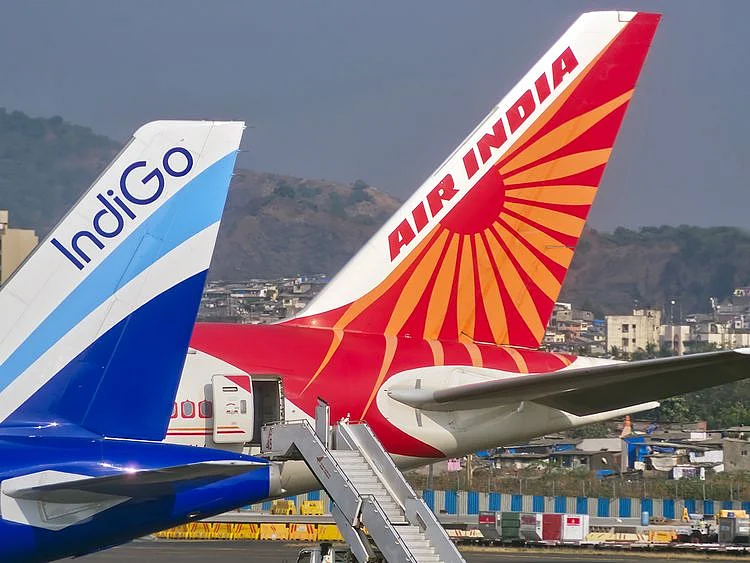India’s airlines set new records for aircraft orders – will this finally rescue its aviation sector?
India’s two big airlines place mega aircraft orders, but can others survive?

Dubai: It seems to be the turn of India’s airlines to set new records, with IndiGo placing a 500-jet order with Airbus (with a list price of $50 billion).
This makes it the biggest order ever in aviation history – and eclipsing that placed by Air India for 470 aircraft in February.
Aviation experts are hopeful these moves would eventually address the pressing need to increase capacity and stabilize airfares in India’s domestic aviation needs as well as on UAE-India routes.
Also Read
India’s biggest airline posts profit short of expectationsParis Air Show: Airbus wins record 500 jet order from India’s IndiGoCan Air India make that turnaround after decades of losses? Tatas and CEO Campbell Wilson think soAir India’s historic plane order deliveries to begin this yearWhile IndiGo has announced its intentions to ramp up its footprint on international routes, what percentage would be directed to the UAE is to be seen. Currently, the airline provides daily services to India from four airports in the Emirates - Dubai, Abu Dhabi, Sharjah, and RAK.
These orders by IndiGo and Air India came about even as problems persist for other Indian carriers, with Go First yet to get back to flying after encountering a series of crippling financial issues. That brought on a marked reduction in airline capacity at a time when demand has been building up nicely towards summer travel. Go First also had services on the UAE-India sector, and the airline remains hopeful of making a comeback before this month is over.
“With Go First cancelling operations, about six to 6.9 per cent of the capacity has gone out,” said Satyendra Pandey, Managing Partner, Aairavat Technology and Transport Ventures. “While it’s not bad for the airlines (that are operating), it is not good for the consumer.”
For example, Go First’s international flights out of Kannur in south Indian state of Kerala to the Middle East has been severely restricted.
“This will give the airline’s competitors a pricing advantage,” said Lalitya Dhavala, Valuations Consultant with Ascend by Cirium. “Higher airfares are being accepted as the ‘new normal’ among consumers.”
Summer-time airfares on routes from UAE to India have already shot up, and analysts are anticipating fares could be around 50-60 per cent higher in the coming three to four months.
All said and done, the Indian aviation market is now effectively a duopoly.
Opportunities for GCC carriers?
The crisis faced by GoFirst also presents an interesting opportunity for GCC competitors. Lalitya said, “About 7 per cent of the Indian carriers’ routes are internationally focused compared to domestic, and as such, there is potential for expansion in this market.”
International capacity between India and the GCC region has been somewhat evenly split between Gulf carriers and Indian operators, with the GCC region being Indian airlines’ largest international market. The bilateral seat-share agreement between India and UAE stipulates 65,000 (Dubai) and 55,000 (Abu Dhabi) seats, respectively.
“The yields on India- GCC market are very competitive in the Economy cabins,” said Lalitya.
Only Air India operates a full-service premium cabin to the Middle East (Indigo and Spicejet are low-cost offerings. As such, in this segment, Indian airlines may continue to find it challenging to compete with their Gulf counterparts, especially after Emirates officially launches its Premium Economy offerings to Mumbai and Bengaluru (from October 29).
John Grant, a senior analyst with OAG, said the only way the Indian carriers can compete with their GCC counterparts is by offering direct services to the largest markets. And continually striving to improve their services, from the aircraft quality to the on-time performance to the quality of inflight service, all of which needs to be done cost-effectively.
What about new entrants?
Low-cost carrier Akasa Air is set to launch international routes (by the end of this year) once they comply with the Indian DGCA’s regulations of stipulating at least a 20-aircraft strong fleet. While the airline has yet to provide the full scope of its planned international operations, analysts say it could look at the GCC and Middle East as its first foreign source market.
Pandey said, “Akasa Airlines are well-positioned to grab a piece of that pie. Their planned international operations may also be accelerated.”
Sign up for the Daily Briefing
Get the latest news and updates straight to your inbox
Network Links
GN StoreDownload our app
© Al Nisr Publishing LLC 2025. All rights reserved.